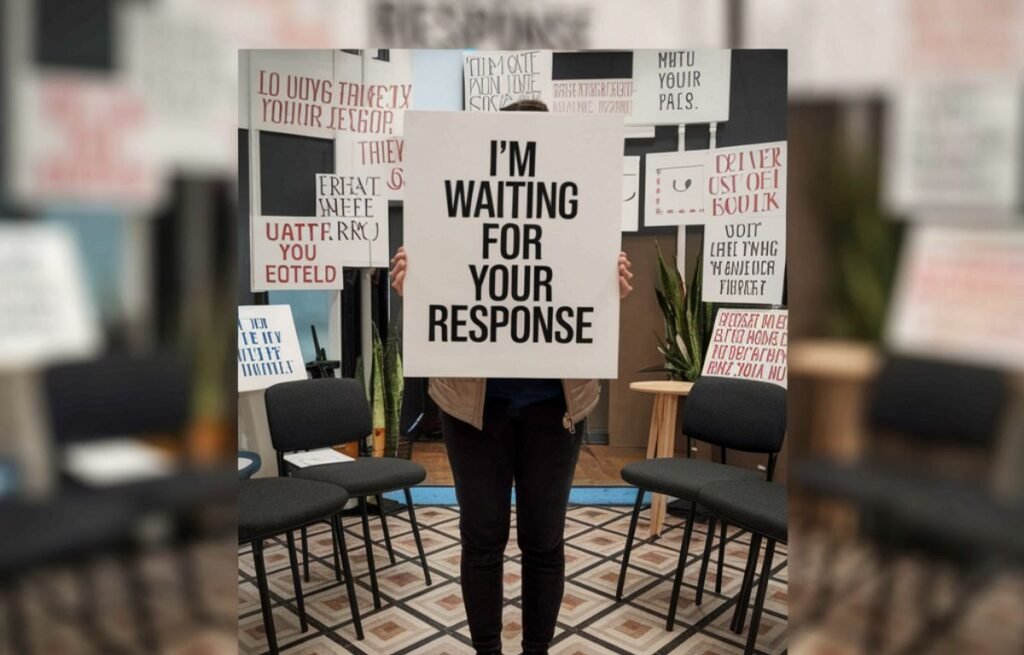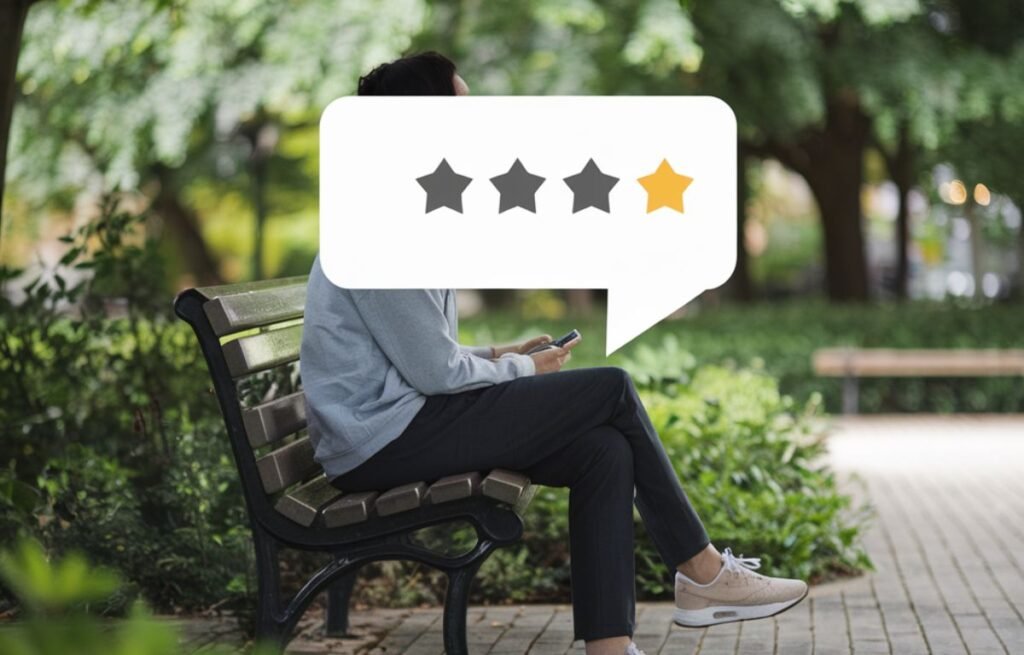In the world of communication, especially in business, waiting for a response can feel like an eternity. But constantly saying “I’m waiting for your response” can come off as impatient or even annoying. Finding alternative phrases can help you maintain professionalism while gently nudging the recipient. In this article, we’ll explore 20 other ways to say “I’m waiting for your response” that will keep your communication polite, clear, and effective.
1. Looking Forward to Your Reply
This phrase shows anticipation without sounding pushy. It expresses that you’re eager to hear back while keeping the tone positive.
2. Hoping to Hear from You Soon
A more gentle approach, this phrase conveys that you expect a reply soon but doesn’t pressure the recipient.
3. Awaiting Your Feedback
When you need someone’s opinion or decision, “awaiting your feedback” is a great way to phrase your expectation.
4. I Appreciate Your Prompt Response
This phrase is both polite and assertive. By appreciating their prompt response, you’re indirectly requesting it.
5. Please Get Back to Me When You Can

This casual and considerate phrase allows the recipient some flexibility, making it a good choice in less formal situations.
6. I’m Eager to Hear Your Thoughts
Use this phrase to express enthusiasm for their input. It’s an encouraging way to ask for a reply.
Also Read: Your Ultimate Guide to GSMLS com
7. Let Me Know Your Thoughts
Short and to the point, this phrase is a direct request for feedback or a decision.
8. I Look Forward to Your Response
Similar to “Looking forward to your reply,” this phrase is polite and anticipates a response without seeming impatient.
9. Please Advise at Your Earliest Convenience
This is a very professional way to request a response. It allows the recipient to take their time while still showing urgency.
10. I’m Awaiting Your Reply
Straightforward and professional, this phrase makes it clear that you’re expecting a response.
11. I Would Appreciate Your Response

This phrase politely emphasizes the importance of a reply, making it clear that their input is valued.
12. Thank You in Advance for Your Reply
Showing gratitude before receiving a response can be a subtle nudge. It’s polite and assumes cooperation.
13. Looking Forward to Your Thoughts
If you need feedback or an opinion, this phrase is a friendly way to ask for it.
14. When You Have a Moment, Please Reply
This is a polite and unhurried way to request a response, perfect for non-urgent matters.
Also Read: 17 Other Ways To Say “Thank You for Letting Me Know”
15. Can You Please Provide an Update?
This phrase is useful when you need a status update. It’s a direct request but doesn’t sound demanding.
16. I’m Interested in Hearing Back from You
A softer approach, this phrase expresses interest in their response without creating pressure.
17. Could You Please Let Me Know?
This phrase is both direct and polite, making it suitable for most situations where a response is needed.
18. I’d Love to Hear Back from You
This phrase conveys a friendly tone, making it a good choice for more informal or personal communication.
19. Please Respond at Your Earliest Convenience

This phrase combines politeness with a sense of urgency, making it clear that a timely response is appreciated.
20. I’m Eagerly Awaiting Your Response
This phrase shows enthusiasm and anticipation, making it clear that you’re keen to hear back soon.
How to Choose the Right Phrase
Choosing the right phrase depends on the context of your communication and your relationship with the recipient. Here are some tips to help you pick the most suitable option:
- Consider the Tone: Are you writing formally or informally? Phrases like “Please get back to me when you can” are more casual, while “Please advise at your earliest convenience” is more formal.
- Urgency Matters: If you need a quick response, phrases like “I appreciate your prompt response” or “Please respond at your earliest convenience” may work better.
- Relationship: Consider how well you know the recipient. For close colleagues, you might use “I’d love to hear back from you,” whereas, for a client, you might opt for “Looking forward to your response.”
Why It’s Important to Be Polite
Being polite in your communication is key to maintaining good relationships. It shows respect for the recipient’s time and can make them more willing to respond quickly. Politeness also prevents misinterpretations that could arise from more direct or blunt language.
Also Read: MyProCare com: Your Ultimate Guide to Health and Wellness
Avoiding Common Pitfalls
When waiting for a response, it’s easy to get frustrated, but conveying that frustration can be counterproductive. Here are some common mistakes to avoid:
- Sounding Impatient: Phrases like “Why haven’t you responded?” can come off as rude. Instead, opt for a more positive tone.
- Being Too Vague: Make sure your request for a response is clear. Phrases like “Let me know” without context might leave the recipient unsure of what you’re asking.
- Over-communicating: Repeatedly following up with “I’m waiting for your response” can annoy the recipient. It’s better to give them some space and follow up after a reasonable amount of time.
When and How to Follow Up
If you don’t receive a response after your initial message, following up is sometimes necessary. Here’s how to do it effectively:
- Wait a Reasonable Time: Depending on the urgency, waiting 2-5 business days is usually appropriate before following up.
- Use a Different Phrase: If you’ve already used one of the 20 phrases above, choose a different one for your follow-up. For example, if you initially said “Looking forward to your reply,” you might follow up with “I’m eagerly awaiting your response.”
- Keep It Short: A brief follow-up message is often more effective. A simple “Just following up on my previous message. I look forward to your response” can suffice.
The Role of Timing in Communication
Timing plays a crucial role in how your message is received. Consider the recipient’s schedule and time zone. Sending a message at the start of the day may yield a quicker response than one sent late in the evening. Additionally, avoid sending follow-up messages too quickly, as this can come across as pushy.
Examples of Using These Phrases in Real Situations
To see how these phrases might work in real-life scenarios, let’s look at a few examples:
- Scenario 1: You’ve sent a project proposal to a client and are waiting for feedback.
- Message: “Hi [Client Name], I hope you’re doing well. I’m eagerly awaiting your feedback on the proposal I sent last week. Please let me know your thoughts when you can.”
- Scenario 2: You’re waiting for a colleague to send over some important data.
- Message: “Hey [Colleague’s Name], when you have a moment, could you please send over the data we discussed? I look forward to your response.”
- Scenario 3: You’ve interviewed for a job and are waiting to hear back.
- Message: “Dear [Interviewer’s Name], thank you again for the interview last week. I’m very interested in the role and am looking forward to your response.”
How to Make Your Communication Stand Out
To make your message stand out, personalize it as much as possible. Reference previous conversations, acknowledge the recipient’s schedule, or express specific interest in their feedback. This shows that you value their input and are not just sending a generic follow-up.
Conclusion
While waiting for a response can be frustrating, how you phrase your follow-up messages can make a big difference. By using any of these 20 alternatives to “I’m waiting for your response,” you can keep your communication professional, polite, and effective. Remember to consider the tone, urgency, and relationship when choosing the right phrase, and always maintain a courteous approach. This will not only increase your chances of getting a prompt reply but also help you maintain strong, positive relationships in your professional and personal life.
FAQs
What Are the Best Phrases to Use When You Need a Quick Response?
When you need a quick response, phrases like “I appreciate your prompt response,” “Please respond at your earliest convenience,” and “Could you please provide an update?” are effective. These phrases convey urgency while remaining polite.
Is It Okay to Follow Up If I Haven’t Received a Response?
Yes, it’s perfectly okay to follow up if you haven’t received a response. Just ensure you wait a reasonable amount of time, typically 2-5 business days, before sending a follow-up message. Use a polite phrase such as “Just following up on my previous message. I look forward to your response.”
How Can I Make Sure My Message Doesn’t Come Across as Impatient?
To avoid sounding impatient, use phrases that are polite and positive, like “Looking forward to your reply,” or “Please get back to me when you can.” Avoid using harsh or demanding language, and allow the recipient some time before following up.
What Should I Do If I Still Don’t Get a Response After Following Up?
If you don’t receive a response after following up, consider reaching out through a different communication channel, such as a phone call or a meeting request. It may also be helpful to check in with a mutual contact who can assist in getting a response.
How Can I Keep My Communication Professional Yet Friendly?
To keep your communication professional yet friendly, use phrases that balance politeness and warmth, such as “I’m interested in hearing back from you,” or “Thank you in advance for your reply.” Personalizing your message by referencing previous conversations can also add a friendly touch.
What Phrases Are Suitable for Formal Business Communication?
For formal business communication, phrases like “Please advise at your earliest convenience,” “I’m awaiting your reply,” and “I would appreciate your response” are suitable. These phrases maintain a professional tone while clearly requesting a response.
Can I Use Casual Language in Professional Emails?
It depends on your relationship with the recipient and the context of the communication. In a less formal setting or with a colleague you know well, casual phrases like “Let me know your thoughts,” or “Please get back to me when you can” are acceptable. However, in more formal situations, it’s best to stick to professional language.
How Can I Politely Ask for an Update Without Sounding Pushy?
To ask for an update politely, use phrases like “Can you please provide an update?” or “Please let me know if there are any updates.” These phrases are direct but courteous, making them effective for requesting a status check without being pushy.
What Should I Do If the Recipient Is Busy and Can’t Respond Immediately?
If the recipient is busy, acknowledge their schedule in your message. For example, you could say “When you have a moment, please reply” or “Please get back to me when you can.” This shows that you respect their time while still indicating that you need a response.
How Often Should I Follow Up If I Haven’t Received a Response?
It’s generally recommended to wait 2-5 business days before following up on a message. If there’s still no response after your first follow-up, you can wait another few days before reaching out again. Be mindful not to over-communicate, as this can annoy the recipient.

As a seasoned contributor to “Meowskull”, Rosalie combines her linguistic prowess with a keen understanding of various topics, ensuring a delightful and informative reading experience. Her articles effortlessly blend clarity, creativity, and a touch of elegance, making language exploration an exciting journey for readers.